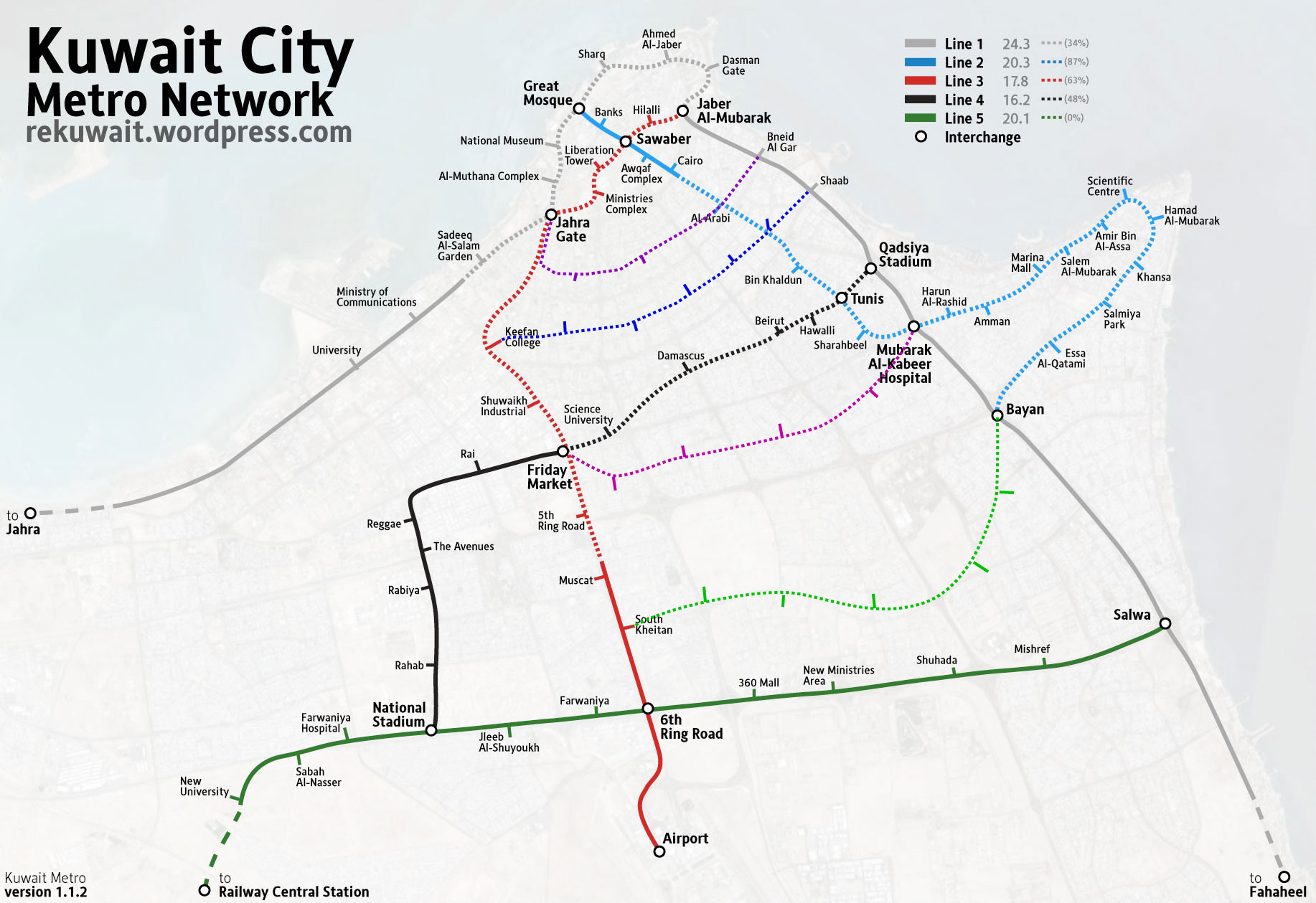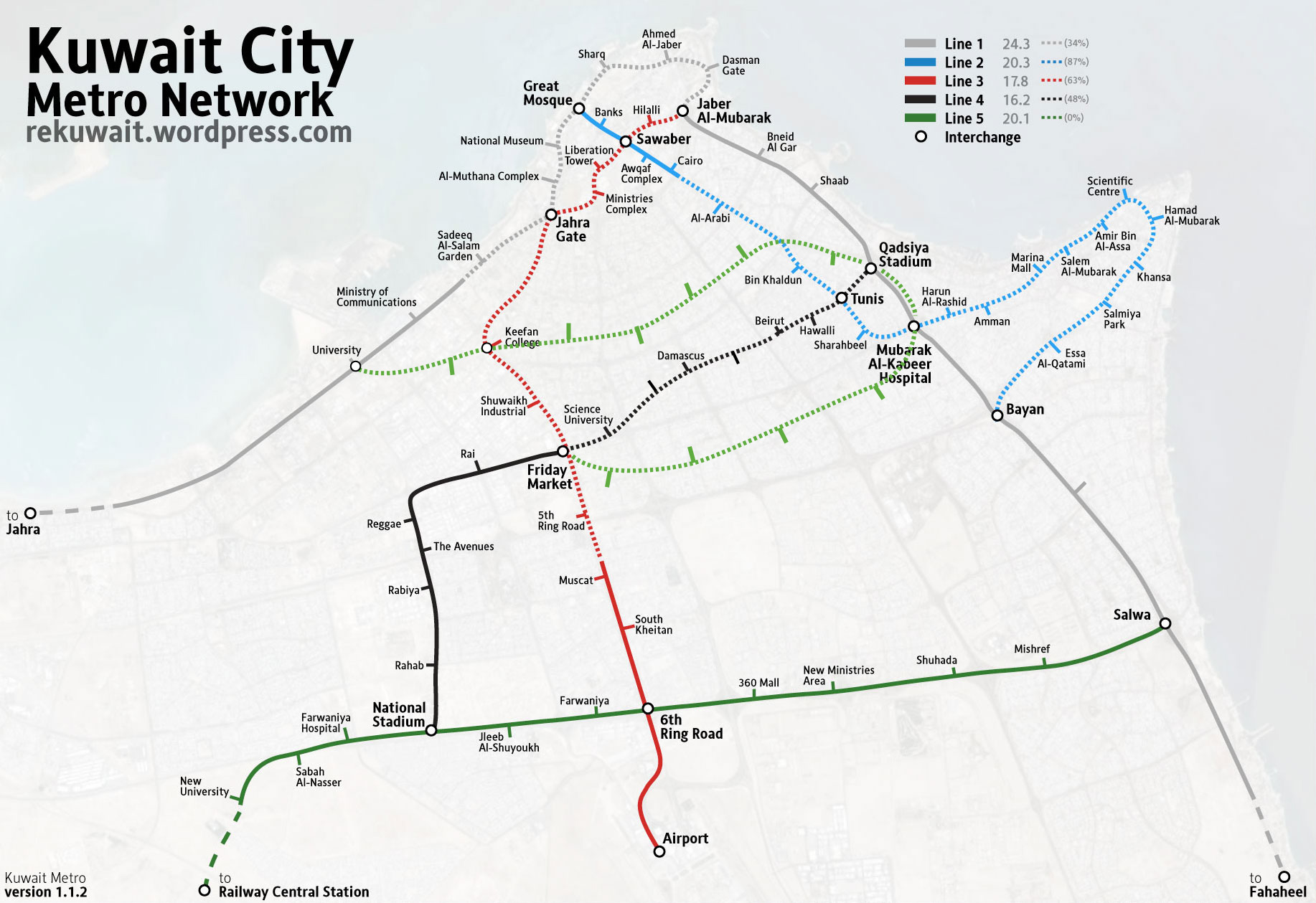The heat in Kuwait in the summer is unbearable. Yet this is only a problem between June and September. The rest of the year is fairly pleasant, especially in the morning and evening. We have to design our spaces with that in mind and not be trapped because we fear the hot months. Scandinavia is basically frozen for half the year, yet they design knowing that for the other half the weather is very good. We should do the same.
2. Most of the dwellings are within a five-minute walk of the center, an average of roughly 400 meters.
In an ideal world, the Metro would criss-cross our radial residential areas and have stops in each neighborhood center. This would officially make Kuwait a walkable city, as it means that everyone has the option of living a car-free lifestyle. I’m sure this isn’t economically feasible, but as a public health initiative, it’s priceless.
The neighborhood centers don’t have to be physically connected to each other, of course. The point is that everyone can simply go outside and have a pleasant walk and arriving at a unique and exciting destination. This would also allow the residential areas to be exponentially denser without fear of the transportation system failing because every area is now mixed-use and self sufficient.
This would eventually lead to the collapse of the ‘mall mentality’. The neighborhood centers become a truly democratic and public space. Instead of going to The Avenues to hang out, you might go to the Shamiya center and have dinner, watch a show and have a nice stroll there meeting a friend who lives in Shamiya. You get all the amenities and advantages of a mall without the parking headache.
Every neighborhood center would grow to have its own distinct character. Malls are only as imaginative as the developers that built them. A public space is democratic in nature, meaning that it is up to the people to decide how the space should evolve. I know for a fact that young, creative Kuwaitis are far more imaginative than even the best developer. A subsidy for young Kuwaiti entrepreneurs will help encourage them to converge and all use the space together, focusing their creative energies into creating a wonderfully unique, distinctly Kuwaiti experience.

-A stupid idea, but I can’t think of a better way to waste money.
Edited: Slightly less stupid (fewer interchanges) but still wasteful.


Based on your new proposed lines, it would take me round 43 minutes to get to my work place every morning where now it takes me over an hour! Not only is the metro good for all the reasons Barrak mentioned, but it also saves us valuable time. And you get to read/work on your journey unlike when you’re driving, so there you go more valuable time gained.
I fixed the map a little. The universities are a lot closer together now. A lot of the light rail in other places is used by students. This would help a lot in terms of parking and cutting the commute, and like you said they can study on the way to class.
It just hit me that the metro stops in every neighborhood center will effectively become park and ride stations during the summer. In the winter I wouldn’t mind walking to it, but i’d rather drive to it and park my car there in July. This is actually looking less stupid to me the longer I think about it. Or maybe I haven’t been sleeping well and i’m actually being very illogical…
I imagine getting up, driving the 2 minutes to the Qortuba center, parking my car, getting a cup of coffee, hopping on the train and stopping at Friday Market. I’d switch over to the Red Line and then go all the way to the final stop where its only a few blocks away from my office. This sounds really good to me. I used to think that the metro would be relegated to Hawalli, Salmiya, Farwaniya and the City… But now, if the neighborhood centers are a part of it, it can actually be for everybody. The residential areas can become VERY dense because of this. Think towers and complexes. The central node in every residential area becomes a magnet for development and a mixed use ‘heart’.
Hm.
the problem you are talking about was prdected to happen 50 years ago by the architect Dr.Saba george -the godfather of kuwait architecture as people call him-..when he explained the sudden urban development in kuwait that happened within ten years only..leaving alot of gaps in the city..forcing people to travel long distances to reach their working areas..which in the other hand made them rely more and more on vehicles-especially with the wealth and the cheap fuel-..this all led to the disapperance of the practice of walking
If this does work, and God willing it will D8<, then I think the government should take another look at the road system.